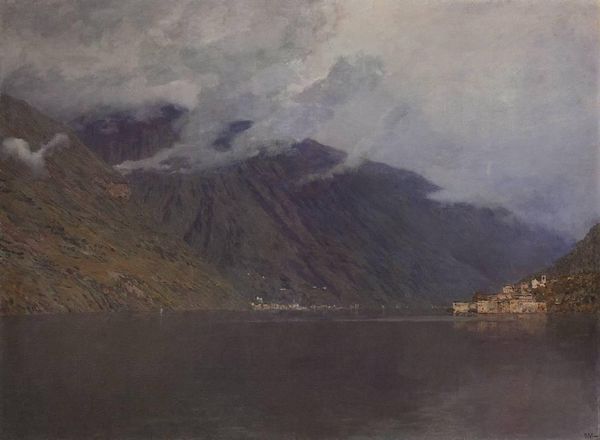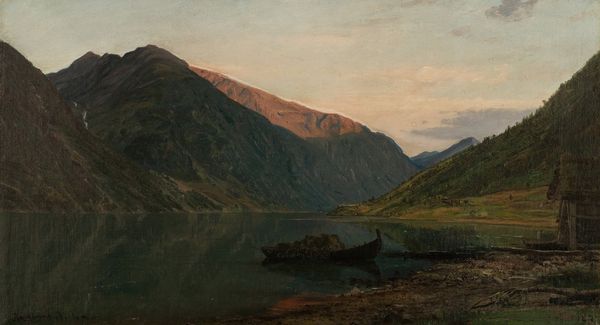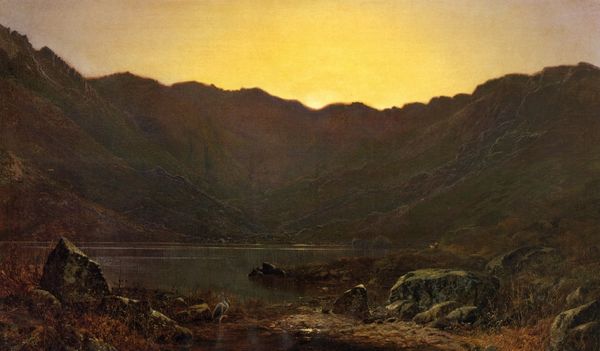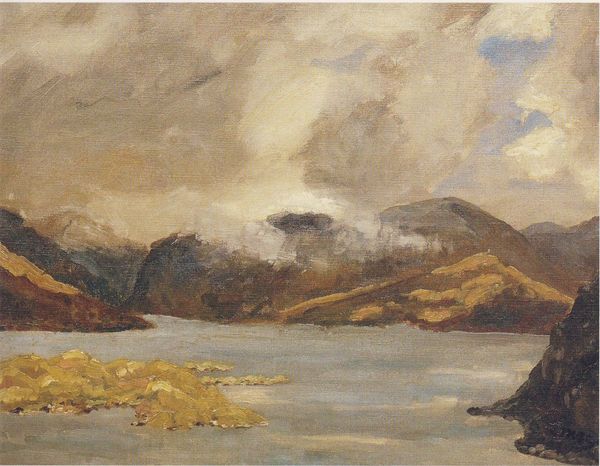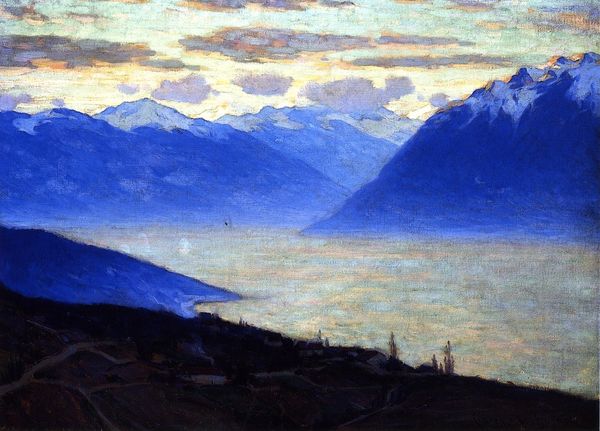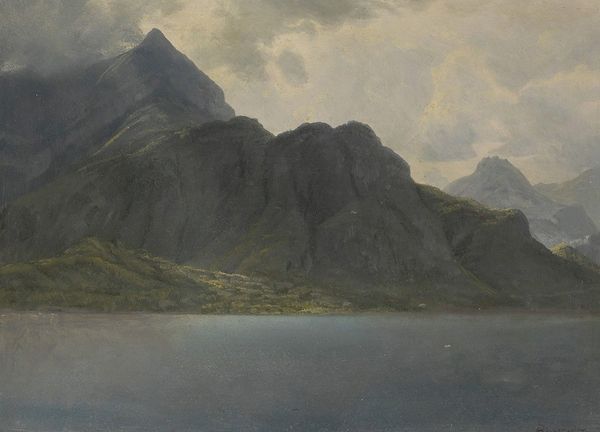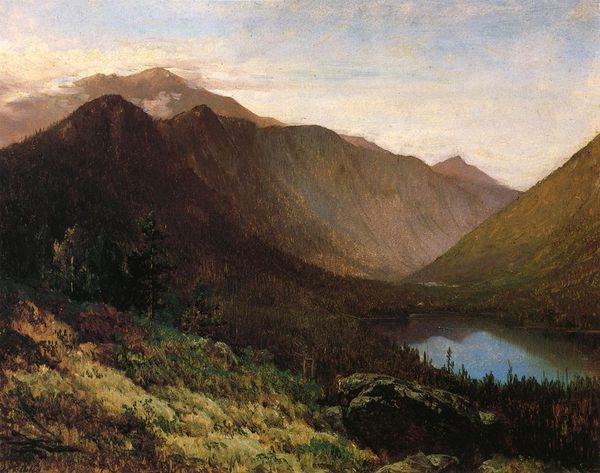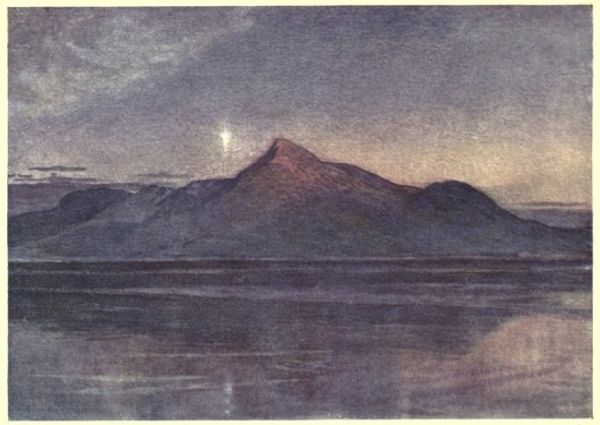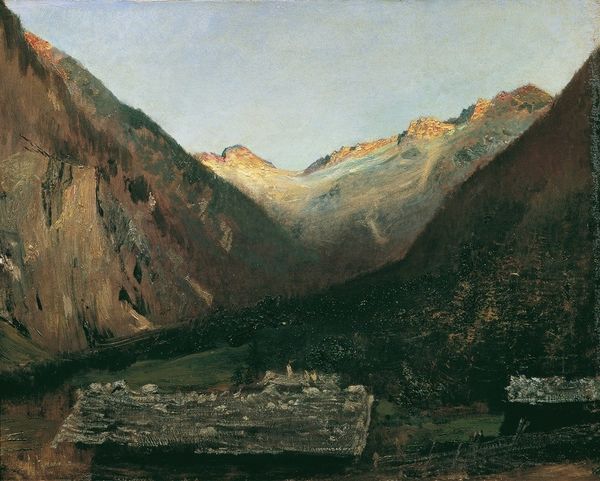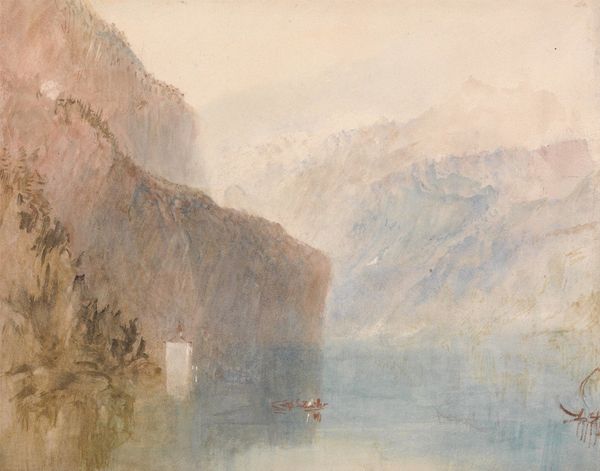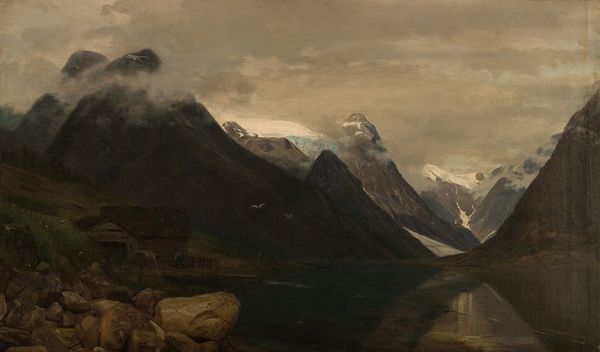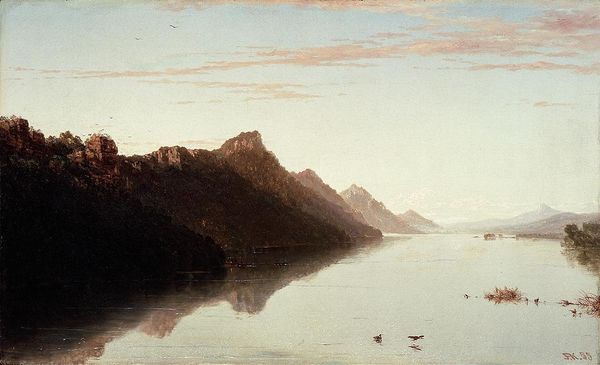
Dimensions: 96 x 128 cm
Copyright: Public domain
Curator: Isaac Levitan painted this scene, titled "Lake Como," in 1894 using oil paint. The subject matter, the iconic Italian lake, appears rather brooding, wouldn’t you say? Editor: Absolutely, the dramatic landscape is intense. What draws me in is the tactile quality of the brushstrokes on the mountain face—it looks less like paint and more like textured earth, echoing the real material it depicts. I wonder about his specific paint application. Curator: Well, look at how he builds up layers in the sky and water; the way Levitan works with the oil gives a palpable sense of depth and volume. The artist really makes a point of drawing our eyes to the process of creation, the physical engagement with materials. We can almost feel the hand of the artist. Editor: True, but let’s consider this scene beyond its pure materiality. A locale like Lake Como has historical weight; for centuries it's been a retreat for the privileged. Levitan, as a Jewish artist in late 19th-century Russia, would have occupied a very different social position. I'd wager this work becomes an intersection between romantic escapism, access to travel and resources, and subtle social commentary through visual language. Curator: That’s an insightful perspective. It seems like his method becomes key here. By emphasizing materiality—the dense, textured oil paint—the painting invites viewers to slow down. They can see not only the romanticism but the work, and by extension, the access afforded the artist. Editor: And who gets to even represent landscapes like these, right? "Lake Como" challenges us to consider landscape painting not just as pretty scenery but as a constructed view influenced by economic and societal dynamics. How does a painter like Levitan access this scene? That in turn informs our understanding of belonging, and what a privileged landscape suggests. Curator: A fascinating connection to pull out of these strokes of paint. Examining painting in this way gives us a renewed awareness of the whole creative and historical network an artwork belongs to. Editor: Exactly. Art isn’t made in a vacuum—and examining its history, along with the context surrounding the artist and subject matter, uncovers even greater meaning. It shows the complex networks involved in every stage of this painting’s life cycle.
Comments
No comments
Be the first to comment and join the conversation on the ultimate creative platform.
